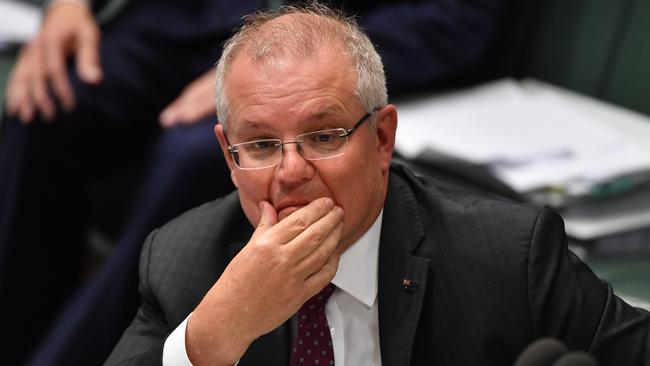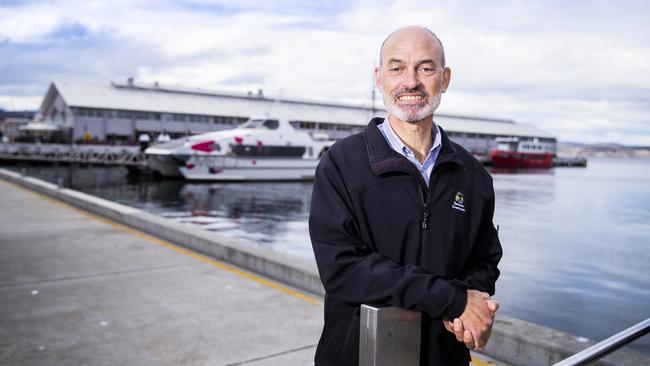Prime Minister Scott Morrison calls for second Bass Strait electricity interconnector to be fast-tracked
The $3.5 billion Marinus Link between Tasmania and the mainland is one of 15 projects across the country earmarked to be accelerated as part of a COVID-19 recovery plan. But questions remain about who will pay for the cable.

Politics
Don't miss out on the headlines from Politics. Followed categories will be added to My News.
PRIME Minister Scott Morrison has labelled a second Bass Strait electricity interconnector a priority project he wants to be fast-tracked, but questions remain about timelines and who will pay for the multi-billion-dollar infrastructure.
The proposed Marinus Link between Tasmania and the mainland — expected to cost $3.5 billion — is one of 15 projects across the country earmarked to be accelerated as part of a COVID-19 recovery plan.
PUMPED HYDRO WILL PUT TASMANIA IN POWER POSITION

A business case last year for Project Marinus found that a 350km, 1500 megawatt cable would be both technically feasible and commercially viable.
It would enable Tasmania to deliver four times as much hydro, pumped hydro and wind energy directly into the national energy market as coal power stations shut down in coming years.
FEDS PLEDGE $56 MILLION TOWARDS SECOND BASSLINK
The Federal Government aims to slash approval times for projects like Marinus from an average of 3.5 years to 21 months — and the PM is in talks with state leaders about removing a layer of environmental approvals to reduce a double-up between state and federal processes.
The move has come under fire from the Greens, whose leader Cassy O’Connor said the announcement offered no funding and was nothing more than “hot air”.
Ms O’Connor feared a weakening of environmental laws, saying rigorous processes were needed to assess large infrastructure projects.
“We are extremely supportive of renewables, but we do have to ask the question, what’s in this project for Tasmania and who will pay for it?”

Energy Minister Guy Barnett said Marinus Link would bring forward an expected $7 billion injection into the Tasmanian economy, along with thousands of jobs. He also said a new interconnector would drive down electricity prices. Mr Barnett said the project would still undergo extensive environmental assessment and checks, but the government’s announcement would ensure it could happen sooner.
EDITORIAL: OWNERSHIP KEY TO SECOND BASS STRAIT INTERCONNECTOR
Labor’s energy spokesman David O’Byrne asked if Tasmanians would need to foot the bill for a project that would largely benefit mainland states.
Energy analyst Marc White, of Goanna Energy, said he was not convinced the Marinus Link was in the best interests of consumers, saying more work needed to be done on alternatives to building a $3.5 billion cable which would not get better or more efficient over time.
Mr White said incentivising initiatives like electric vehicles and home batteries could be a “better long-term play”.
The Tasmanian Chamber of Commerce and Industry said Marinus would aid the state’s COVID-19 recovery.
Marinus Link was intended to be in use by 2027, but a revised timeline is not known.


